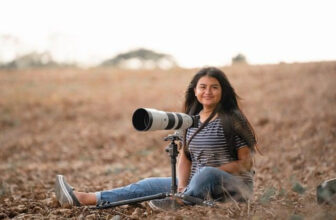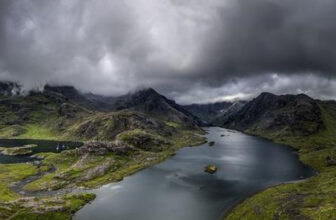Mastering the Art of Still Photography: Expert Tips for Capturing the Perfect Shot
GoogleAds

In a world dominated by quick snapshots taken on smartphones, mastering the art of still photography requires a keen eye, technical skill, and creative vision. Whether you’re a seasoned pro or just starting out, capturing the perfect shot can be a challenge. In this article, we’ll explore expert tips and techniques that will help you elevate your photography game and unlock your full potential behind the lens.
Introduction
Photography is a timeless art form that allows us to capture fleeting moments and preserve them for eternity. Still photography, in particular, is a powerful medium for conveying emotion, telling stories, and showcasing the beauty of the world around us. Mastering the art of still photography requires a combination of technical skill, artistic vision, and a keen eye for detail. In this post, we will explore expert tips and techniques for capturing the perfect shot.
First and foremost, it’s essential to understand the fundamentals of photography, such as composition, lighting, and exposure. Composition refers to the arrangement of elements within the frame, while lighting can make or break a shot. Proper exposure ensures that your image is neither too dark nor too bright. Experiment with different angles, perspectives, and focal lengths to find the most compelling composition for your subject.
When shooting still photography, it’s crucial to pay attention to the smallest details. A slight adjustment in framing or focus can make a world of difference in the final image. Take the time to carefully review each shot and make any necessary adjustments before moving on to the next one. Remember, quality is more important than quantity – it’s better to take one perfect shot than a hundred mediocre ones.
To add visual interest to your still photography, consider incorporating elements of storytelling into your images. Look for ways to convey emotion, create a sense of narrative, or capture a decisive moment. Pay attention to the background, foreground, and overall composition to ensure that every element of the image contributes to the story you’re trying to tell. Remember, a great photograph not only looks beautiful but also evokes an emotional response from the viewer.
In the digital age, post-processing has become an essential part of the photography workflow. Use editing software to fine-tune your images, adjust colors, contrast, and sharpness, and remove any distractions or imperfections. However, it’s important to strike a balance – while editing can enhance your photos, it should not overshadow the original vision you had for the image. Practice restraint and aim to achieve a natural, authentic look in your still photography.
In conclusion, mastering the art of still photography requires dedication, practice, and a willingness to push the boundaries of your creativity. By honing your technical skills, developing your artistic vision, and paying attention to the smallest details, you can capture stunning images that tell powerful stories and leave a lasting impression on viewers. So grab your camera, venture out into the world, and start capturing the perfect shot today.
Understanding Light and Composition
When it comes to still photography, are crucial elements in capturing the perfect shot. Mastering these aspects can make a significant difference in the quality of your photos and help you stand out as a skilled photographer.
Light: One of the most important factors in photography, light can make or break a shot. Pay attention to the direction, intensity, and quality of light when setting up your shot. Experiment with natural light, artificial light, and different light sources to see how they affect your subject.
Composition: The way you arrange elements within your frame can greatly impact the overall aesthetic of your photo. Use techniques such as the rule of thirds, leading lines, and framing to create visually appealing compositions. Don’t be afraid to experiment with different angles and perspectives to find the most compelling composition for your subject.
Remember that practice makes perfect when it comes to mastering light and composition. Take the time to study the work of other photographers and analyze how they use light and composition in their images. Try to replicate their techniques in your own work and see how it enhances the quality of your photos.
| Tip: | Use a reflector to bounce light onto your subject and create more depth and dimension in your photos. |
| Tip: | Experiment with different lighting setups, such as softbox lighting or off-camera flash, to achieve different effects in your photos. |
| Tip: | Don’t be afraid to break the rules of composition and light to create unique and creative photos that stand out. |
Choosing the Right Camera Equipment
When it comes to mastering the art of still photography, is crucial. Whether you’re a beginner looking to take your photography skills to the next level or a seasoned pro in need of an upgrade, selecting the perfect gear can make all the difference in capturing the perfect shot.
One of the first things to consider when choosing camera equipment is the type of camera that best fits your needs. Are you looking for a compact point-and-shoot camera for easy travel and spontaneous shots, or are you in the market for a professional DSLR camera with interchangeable lenses for maximum versatility and control over your images?
Once you’ve decided on the type of camera, it’s time to think about lenses. The right lens can make or break a shot, so it’s important to choose wisely. Consider factors such as focal length, aperture, and image stabilization when selecting a lens that will best suit your photography style and subjects.
In addition to cameras and lenses, other essential camera equipment to consider includes tripods for stability, camera bags for protection and easy transport, memory cards for storing your images, and filters for enhancing your photos in-camera. Investing in quality accessories can help elevate your photography and make the shooting process more efficient and enjoyable.
Ultimately, is a personal decision that depends on your budget, photography goals, and individual preferences. By taking the time to research and test out different gear options, you can find the perfect combination of equipment to help you capture stunning still images and unleash your creativity behind the lens.

Mastering Camera Settings for Still Photography
Understanding Camera Settings
When it comes to still photography, mastering your camera settings is essential for capturing the perfect shot. Understanding the different settings on your camera can help you achieve the desired effects in your photos. From aperture and shutter speed to ISO and white balance, each setting plays a crucial role in creating stunning images.
Aperture
Aperture refers to the size of the opening in the lens through which light passes. A smaller aperture (higher f-stop number) will result in a larger depth of field, making more of the image in focus. On the other hand, a larger aperture (lower f-stop number) will create a shallow depth of field, with only the subject in focus while the background is blurred.
Shutter Speed
Shutter speed determines how long the camera’s shutter remains open to allow light to hit the sensor. A faster shutter speed will freeze motion, while a slower shutter speed will create motion blur. It’s important to choose the right shutter speed based on the speed of the subject and the effect you want to achieve in your photo.
ISO
ISO measures the sensitivity of the camera’s sensor to light. A lower ISO is ideal for shooting in bright conditions, while a higher ISO is needed for low-light situations. Keep in mind that a higher ISO can introduce noise into your images, so it’s important to find the balance between sensitivity and image quality.
White Balance
White balance is crucial for getting accurate colors in your photos. Different lighting conditions can cast a color tint on your images, so adjusting the white balance setting on your camera can help correct these color casts. Whether you’re shooting in natural light or artificial light, knowing how to set the white balance can make a big difference in the final result of your photos.
Utilizing Techniques for Capturing Sharp Images
When it comes to still photography, capturing sharp images is essential for creating stunning and professional-looking photos. Utilizing the right techniques can make a significant difference in the quality of your images. Here are some expert tips to help you master the art of capturing the perfect shot.
1. Use a tripod: One of the best ways to ensure sharp images is by using a tripod. This will help stabilize your camera and prevent any shaking or blurriness caused by hand-held shooting. Invest in a sturdy tripod for the best results.
2. Adjust your settings: Pay attention to your camera settings, such as aperture, shutter speed, and ISO. A smaller aperture (larger f-stop number) can increase depth of field and sharpness, while a fast shutter speed can freeze motion. Experiment with different settings to find the perfect combination for sharp images.
3. Focus carefully: Take the time to properly focus your camera on the subject. Use the autofocus feature to ensure your subject is sharp, or manually focus for more control. Pay attention to details and adjust focus as needed for the best results.
4. Use natural light: Lighting plays a crucial role in capturing sharp images. Utilize natural light whenever possible, as it is softer and more flattering than artificial lighting. Avoid harsh shadows and bright highlights that can cause overexposure or underexposure in your photos.
5. Post-processing: Once you have captured your images, consider post-processing to enhance sharpness and clarity. Use editing software to adjust contrast, sharpness, and noise reduction for a polished look. Be careful not to over-process, as this can result in unnatural-looking photos.

Exploring Creative Angles and Perspectives
When it comes to still photography, capturing that perfect shot requires more than just pointing and shooting. It involves mastering the art of composition, lighting, and creativity to truly bring a photograph to life. Here are some expert tips to help you elevate your still photography game and capture unforgettable images.
1. Play with Perspectives: Don’t be afraid to get down low or climb up high to capture your subject from unique angles. Experiment with different perspectives to add interest and depth to your photographs.
2. Utilize Natural Light: Light is a crucial element in photography, so make the most of natural light whenever possible. Early morning and late afternoon light tends to be softer and more flattering, creating beautiful, natural-looking images.
3. Focus on Composition: The rule of thirds is a classic composition technique that can help you create well-balanced and visually appealing photographs. Place your subject off-center to create a more dynamic composition.
4. Use Negative Space: Don’t feel like you need to fill every inch of the frame with your subject. Embrace negative space to draw attention to your subject and create a sense of simplicity and serenity in your photographs.

Post-Processing Tips for Enhancing Still Photographs
When it comes to still photography, post-processing plays a crucial role in enhancing the final image. Whether you’re a beginner or a seasoned pro, these expert tips will help you master the art of post-processing to capture the perfect shot.
One of the first things to consider when enhancing still photographs is adjusting the exposure. Use editing software to brighten or darken specific areas of the image to achieve the desired effect. Pay close attention to highlights and shadows, making sure that details are not lost in either extreme.
Color correction is another essential step in post-processing. Experiment with saturation, white balance, and tint to bring out the true colors of your photograph. Consider using presets or creating your own custom filters to maintain consistency in your editing style.
Don’t be afraid to crop your image to improve composition and focus. Use the rule of thirds to guide your cropping decisions, and consider experimenting with different aspect ratios to create unique and visually appealing compositions.
Lastly, sharpening and noise reduction can make a significant difference in the overall quality of your still photographs. Use selective sharpening techniques to enhance specific areas of your image, while reducing noise in high ISO shots to achieve a cleaner and more professional look.
Q&A
Q: What are some expert tips for capturing the perfect shot in still photography?
A: Some expert tips for capturing the perfect shot in still photography include using natural lighting, framing your subject thoughtfully, adjusting your camera settings for the desired effect, and practicing patience for the right moment.
Q: How can photographers utilize natural lighting to enhance their photos?
A: Photographers can utilize natural lighting by shooting during the “golden hour” at sunrise or sunset, using diffusers or reflectors to soften harsh sunlight, and positioning their subjects strategically to make the most of the available light.
Q: What techniques can photographers use to frame their subjects in a visually appealing way?
A: Photographers can use techniques such as the rule of thirds, leading lines, and framing within the frame to compose their shots effectively and draw the viewer’s eye to the main subject.
Q: How important are camera settings in capturing the perfect shot?
A: Camera settings are crucial in capturing the perfect shot as they control factors such as exposure, focus, and depth of field. By adjusting settings like aperture, shutter speed, and ISO, photographers can achieve the desired look and feel for their photos.
Q: How can photographers practice patience to capture the right moment?
A: Photographers can practice patience by observing their surroundings, anticipating potential moments, and being prepared to react quickly when the perfect opportunity arises. Taking the time to wait for the right moment can result in more compelling and impactful photos.
Wrapping Up
In mastering the art of still photography, practice truly does make perfect. By following these expert tips and techniques, you can elevate your photography skills and capture breathtaking images that tell a story without saying a word. Remember, every great photograph starts with a curious eye, a steady hand, and a passion for freezing moments in time. So grab your camera, head out into the world, and start shooting – the perfect shot is just waiting to be captured. Happy shooting!
GoogleAds







